
Position
0°

Position
45°

Position
90°

Position
135°
Total Solar
Eclipse
29 March 2006
Gundogdu
- Turkey
Polarization
observation
(preliminary)
The camera is a Digital SLR Canon EOS 5D at ISO 50. The image format is the RAW type. The optic is a dioptric Canon lens EF 400 mm 1:5.6 used at f/5.6. The linear polariser filter is adapted front of the photographic lens. It is a linear polariser. The four angular position method is adopted (0°, 45°, 90°, 135°). Three sequences are taken:
Sequence #1
Two pair of images for
each position filter exposed 1/20 s (first image of the sequence taken about
30 seconds after the second contact).
Sequence #2
Two pair of images for
each position filter exposed 1/3 s.
Sequence #3
Single image for each
position filter exposed 1 s.
For the reduction, if pair of images are available, the two ilmage are added for increase the SNR. The R, G & B channel of the Digital camera are added (so, the result concern panchromatic view). The sky background polarisation is not removed. The complete processing is carried out with Iris software (command POLAR2 is used for calculate the polarization parameters).
Example of the
aspect of corona in function of the polarizer filter azimut angle (sequence
#2)
|
|
|
|
|
Sequence #1 result
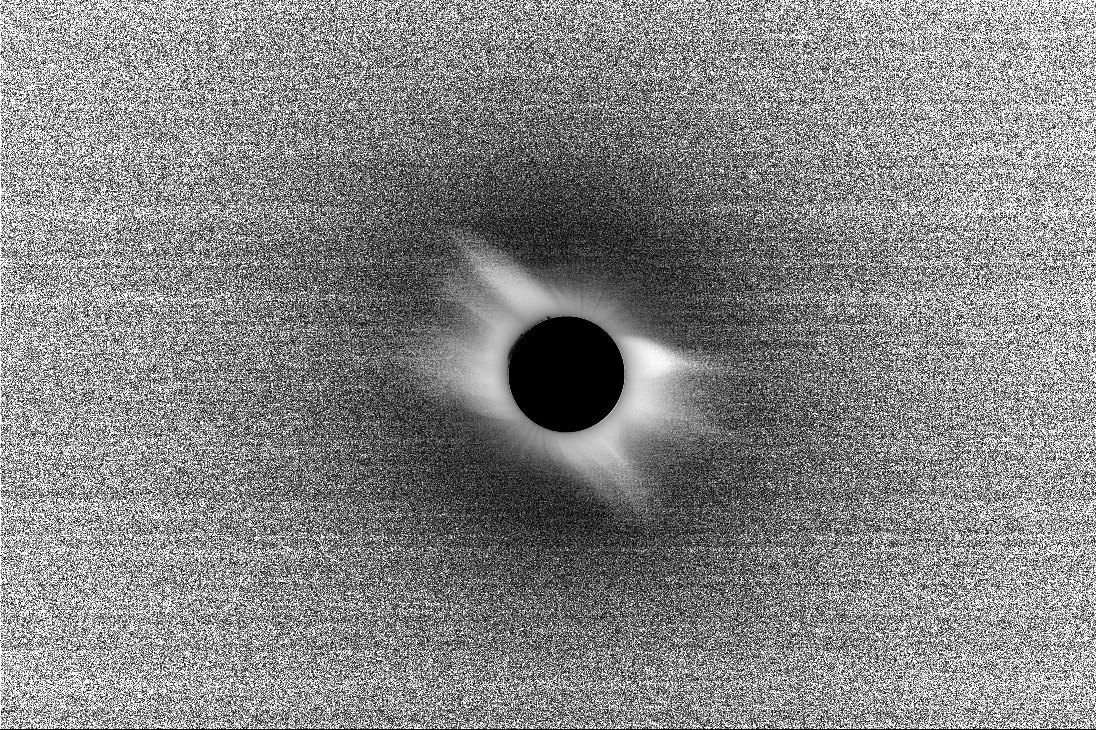
Degree
of polarization. Click for enlarge.
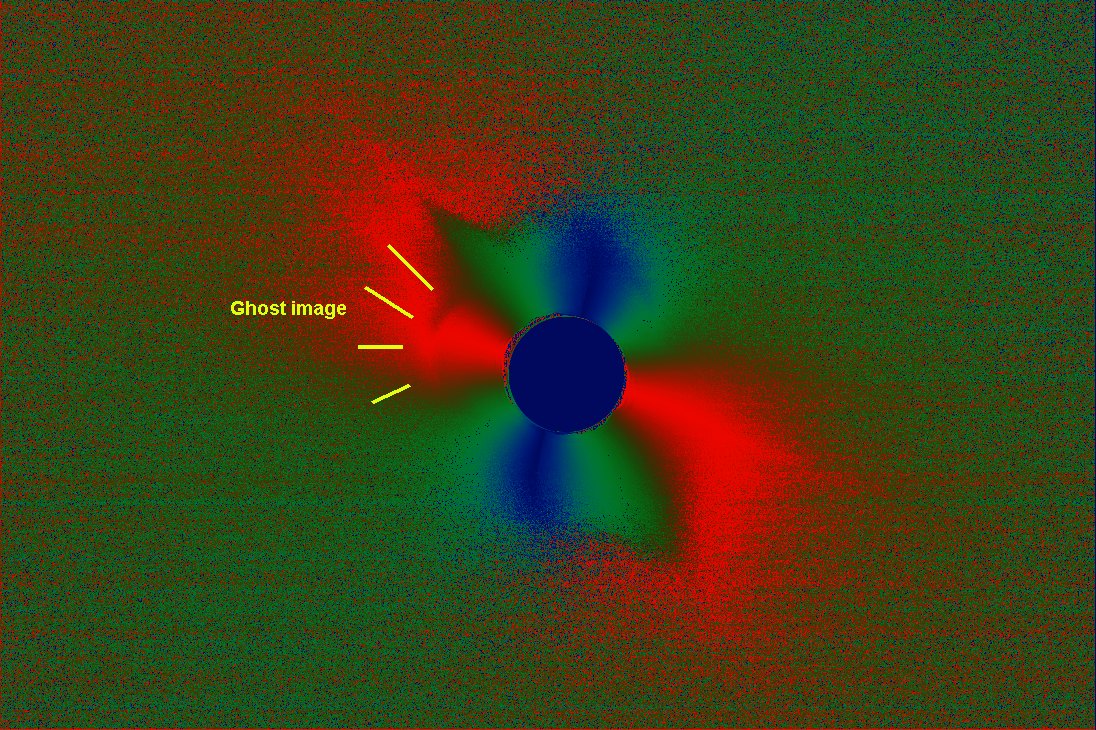
Angle
of polarization (bleu=0°, ..., red=180°). The ghost image is produced by a double
reflection of bright chromosphere on the polariser filter.
Polarization
vectors superposed on a unpolarized image of the corona (sum of 0°, 45°, 90°
and 135° images).
Sequence #2 result
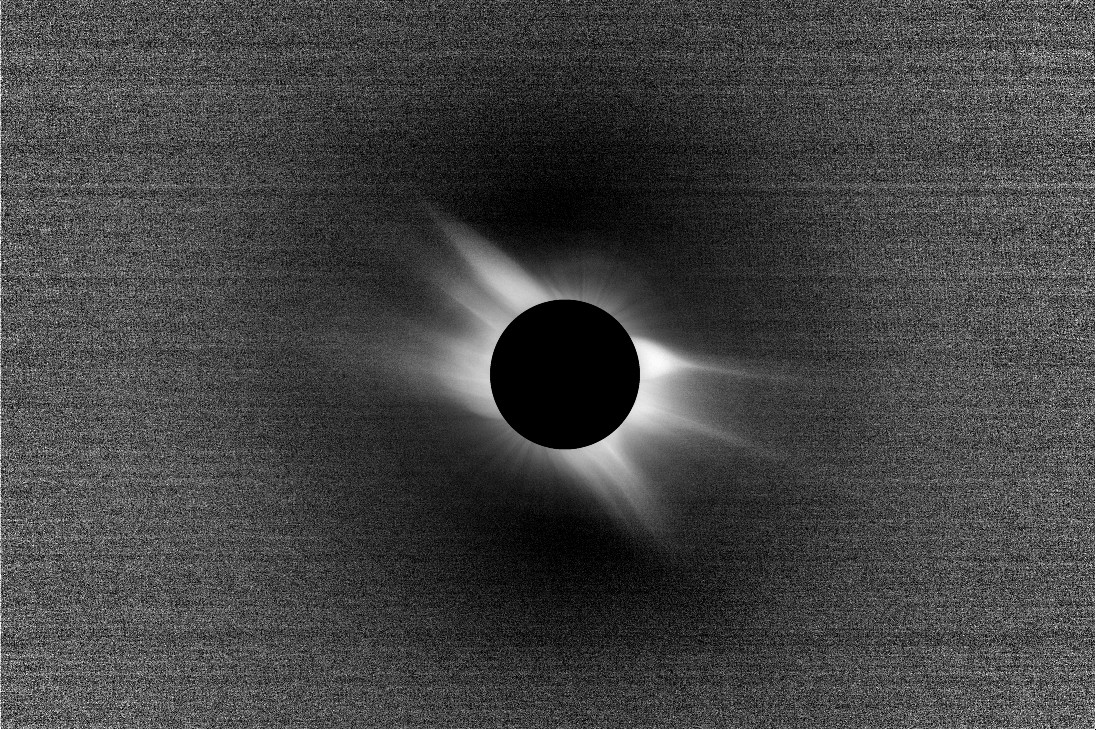
Degree
of polarization. Click for enlarge.
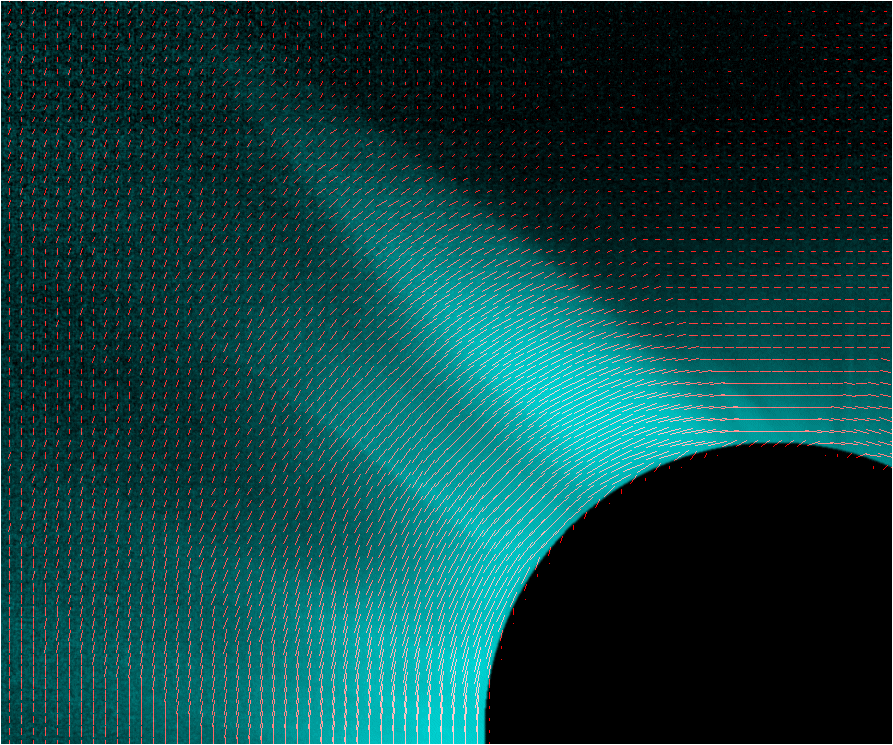
Polarisation
vectors (the background image is polarization intensity map).
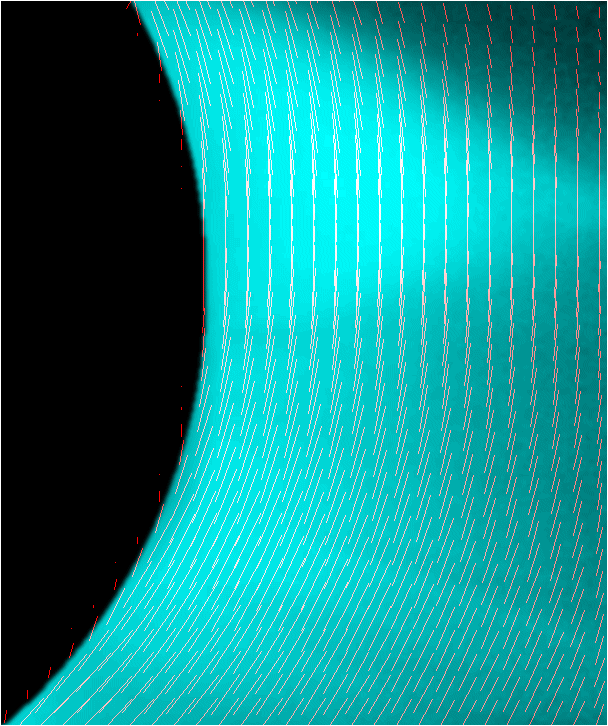
Polarization
vectors superposed on the polarization degree image (detail).
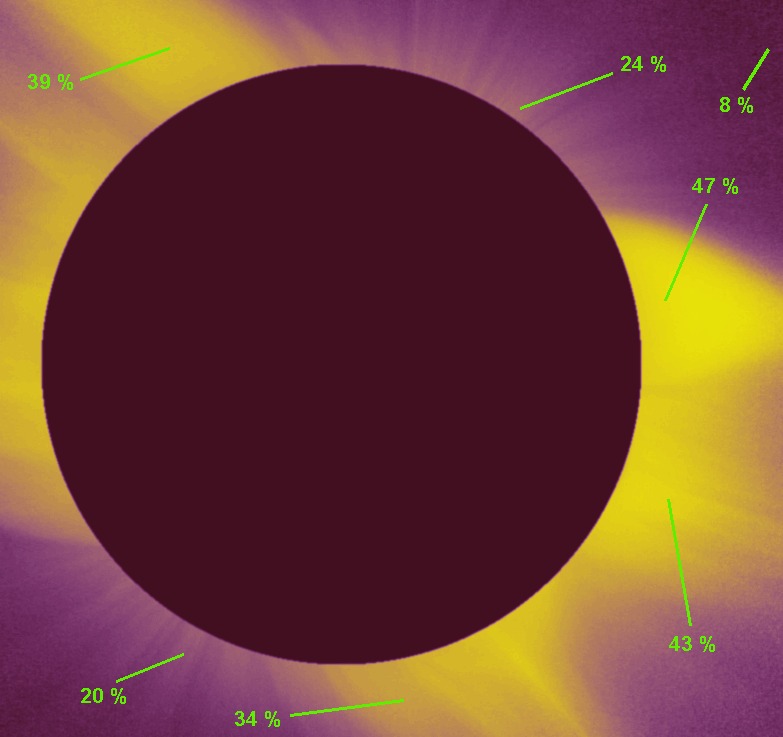
Observed
polarization degree of some region. The far field sky background polarization
degree is 18% (in the corner of the 5D image).
Sequence #3 result
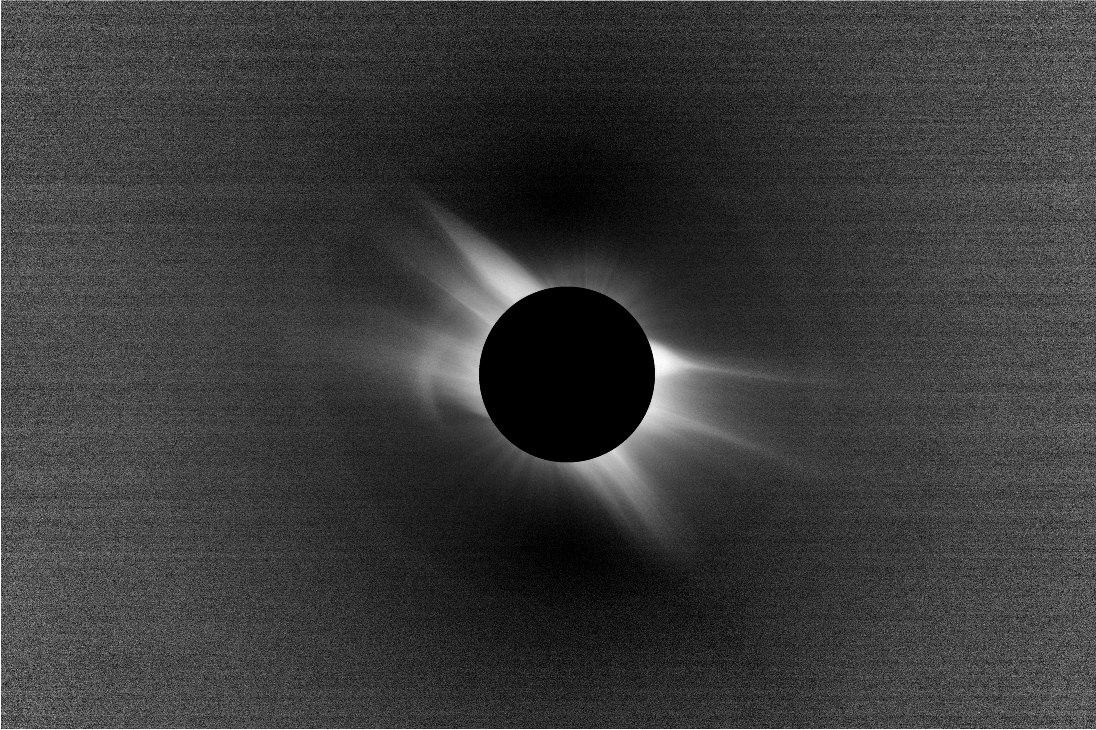
Degree
of polarization. Click for enlarge.
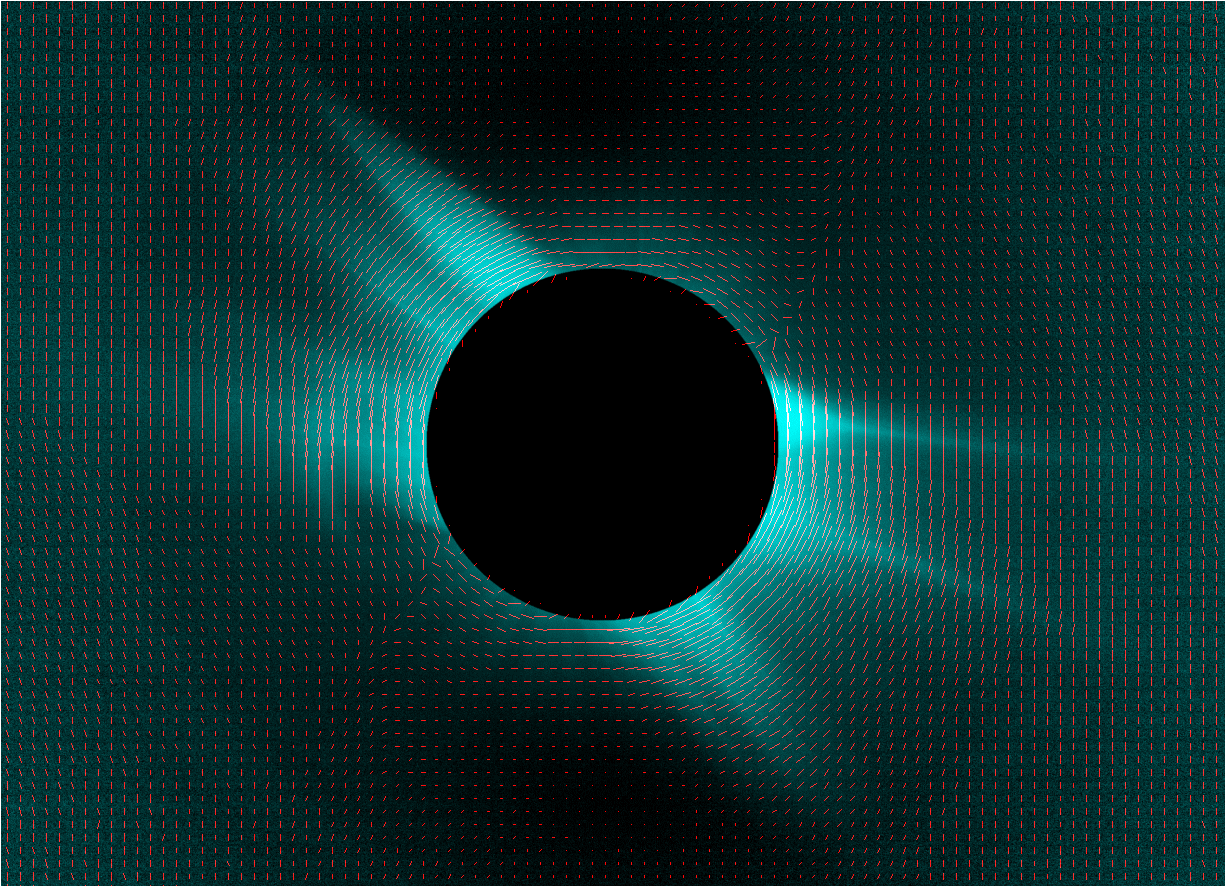
Polarization
vectors superposed on the polarization degree image.
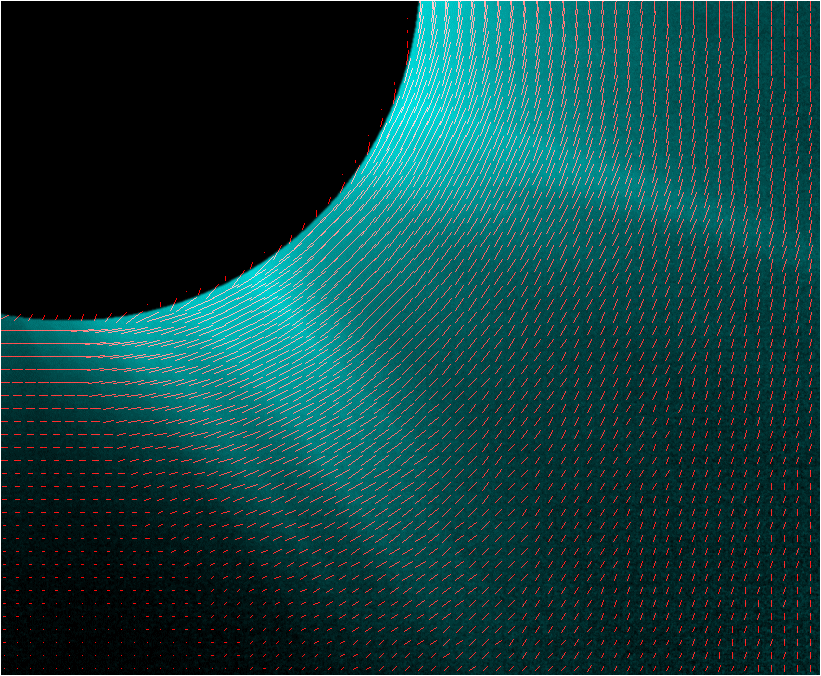
Detail
of the polarisation map (the background image is polarization intensity).
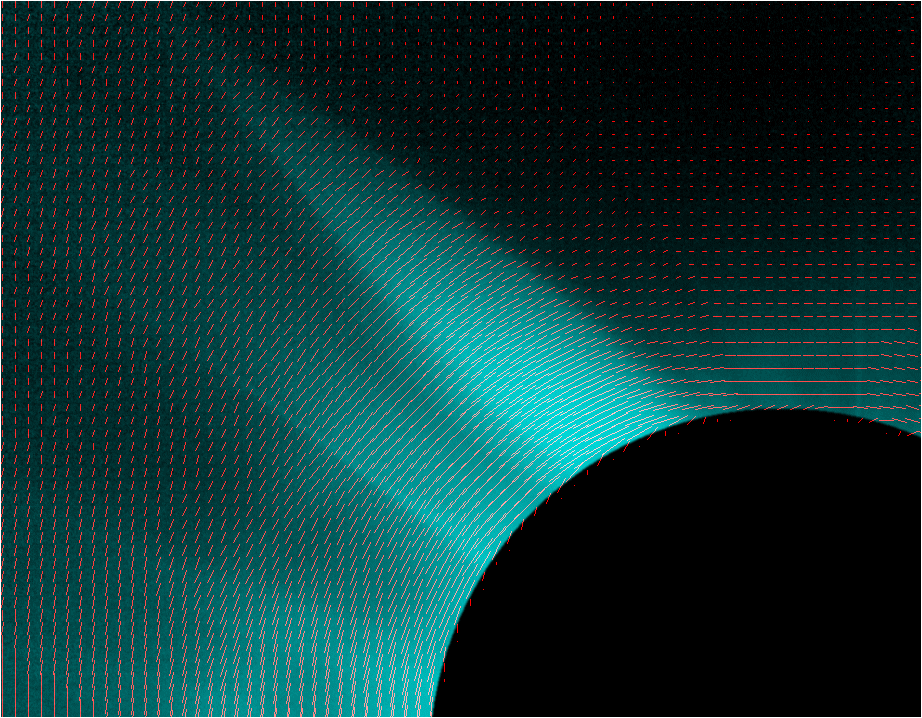
Detail
of the polarisation map (the background image is polarization intensity).
Verification image
We compute the image (for the sequence #3) :
[ I(0°)+(i90°) ] - [ I(45°)+(I(135°) ]
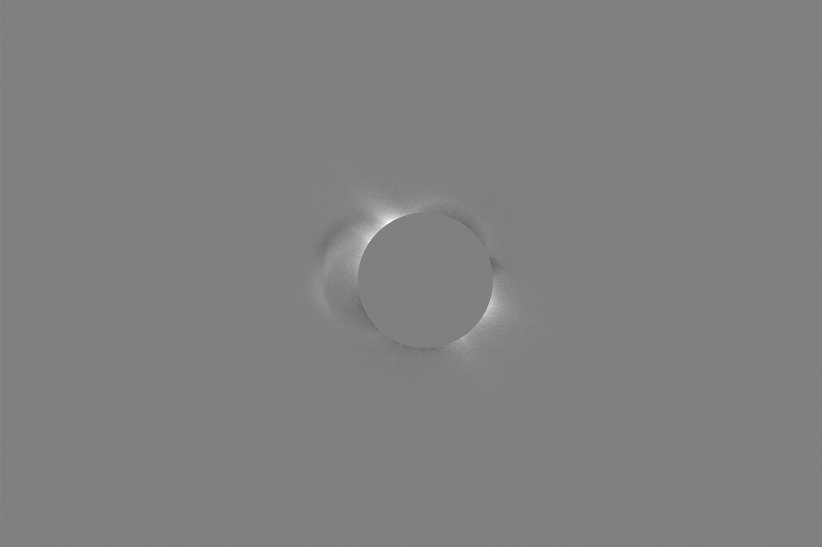
No major radial polarization details are visible. Only the ghost image is present. The reality of radial feature observed in polarization maps is confirmed.